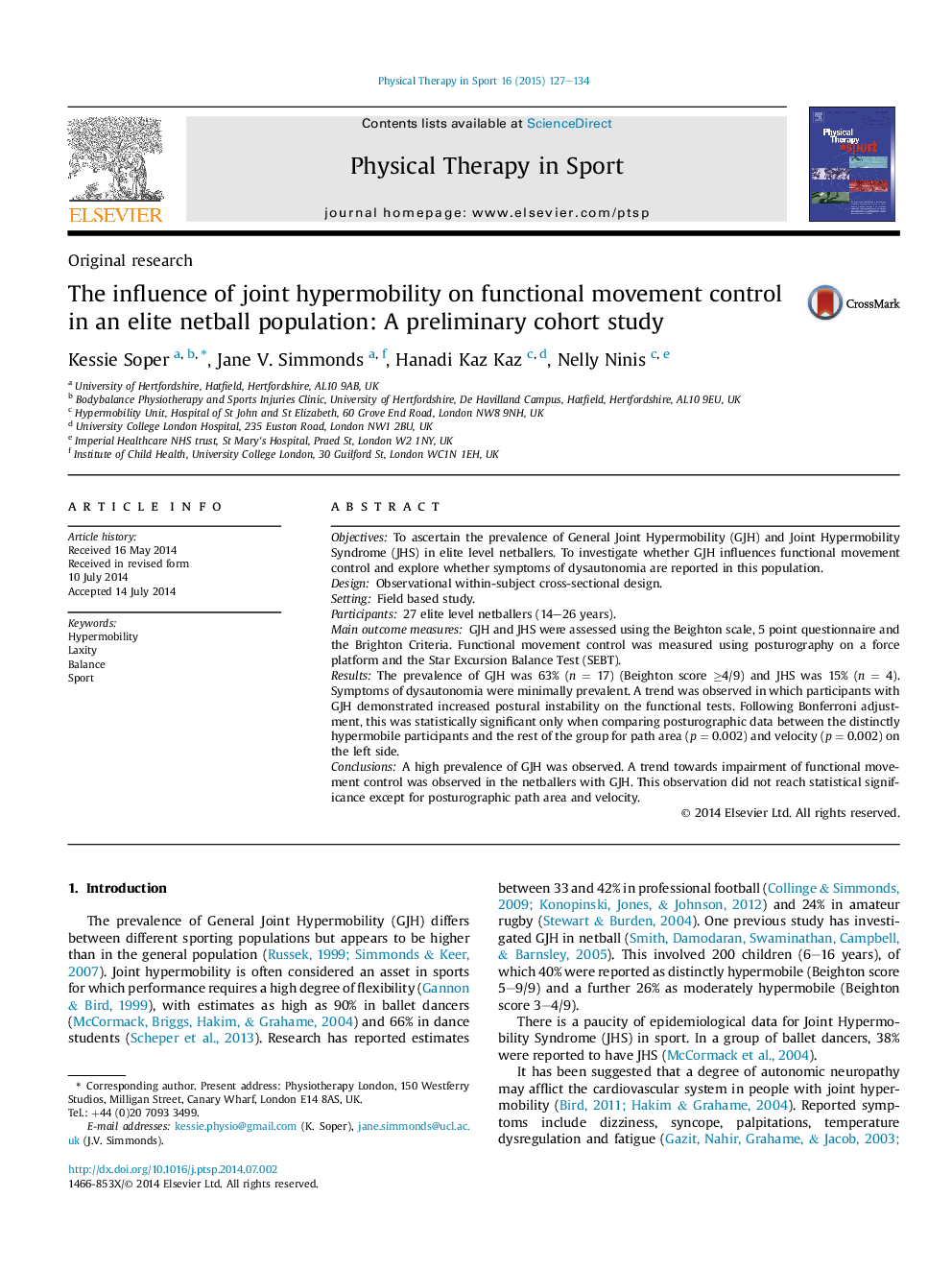| Article ID | Journal | Published Year | Pages | File Type |
|---|---|---|---|---|
| 2703624 | Physical Therapy in Sport | 2015 | 8 Pages |
•A high prevalence of GJH (67%) was identified in the sample of elite netballers.•Dysautonomia was not highly prevalent in this well-conditioned sample.•Functional movement control was compared between athletes with and without GJH.•A trend was demonstrated towards increased postural instability in athletes with GJH.
ObjectivesTo ascertain the prevalence of General Joint Hypermobility (GJH) and Joint Hypermobility Syndrome (JHS) in elite level netballers. To investigate whether GJH influences functional movement control and explore whether symptoms of dysautonomia are reported in this population.DesignObservational within-subject cross-sectional design.SettingField based study.Participants27 elite level netballers (14–26 years).Main outcome measuresGJH and JHS were assessed using the Beighton scale, 5 point questionnaire and the Brighton Criteria. Functional movement control was measured using posturography on a force platform and the Star Excursion Balance Test (SEBT).ResultsThe prevalence of GJH was 63% (n = 17) (Beighton score ≥4/9) and JHS was 15% (n = 4). Symptoms of dysautonomia were minimally prevalent. A trend was observed in which participants with GJH demonstrated increased postural instability on the functional tests. Following Bonferroni adjustment, this was statistically significant only when comparing posturographic data between the distinctly hypermobile participants and the rest of the group for path area (p = 0.002) and velocity (p = 0.002) on the left side.ConclusionsA high prevalence of GJH was observed. A trend towards impairment of functional movement control was observed in the netballers with GJH. This observation did not reach statistical significance except for posturographic path area and velocity.
